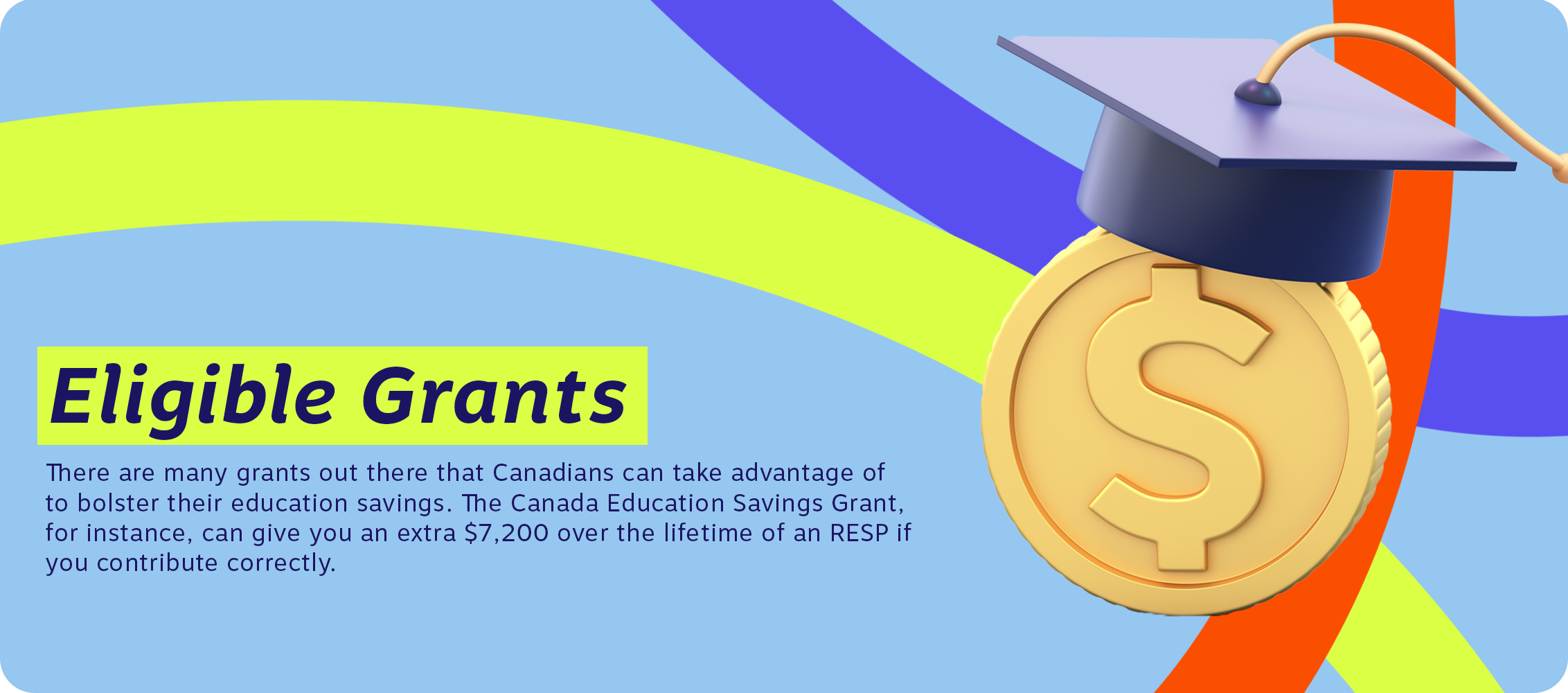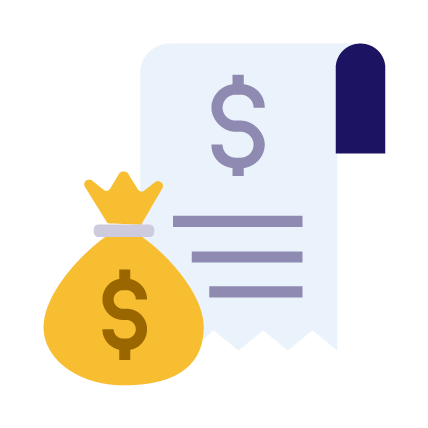For many of us, paying for our children’s education is a long-term financial goal. However, with school often so far away, education savings can typically take a back seat to more immediate needs.
Take it from an expert though: whether you’re saving a little or a lot, the most important decision you can make when it comes to education saving and planning is simply starting.
As any parent can attest, time flies. Children have a tendency to grow up in the blink of an eye, and by saving however much you can, when you can, you’ll make sure you don’t get caught scrambling and scrounging to fund their education at the last minute.
So when’s the best time to start saving for your child’s education?
The truth is, starting to save and doing so sooner has a number of benefits. However, it’s important to be mindful of what’s realistic. You want to assess what’s affordable in consideration of your monthly budget. An affordable savings plan is a sustainable savings plan, and that leads to longer-term savings success. Our education savings calculator can give you a better idea of how your savings can work for you over time.
Many Canadian parents end up scrambling to pull together funds, or have to rely on loans to give their kids the safety net they need to make it through schooling. Although there is no true one-size-fits-all approach to financial planning, when it comes to RESPs, unless you start saving the day before your child heads off to post-secondary school, something can always be done to help. Here’s why:

Compound Growth
As a concept, compound growth is simple – your money grows faster because interest is calculated on your original investment as well as what it makes over time.
Think of your money as a snowball rolling down a hill: the longer it rolls, the more time it has to accumulate and get exponentially bigger. With compound growth, your savings will typically grow, generating more money that is then added to your total. You then generate even more based off the new total, growing your savings even further, faster.
While it is true that the sooner you start saving, the more your money will typically grow in the long run, saving over a shorter period will often net you more than you otherwise would have had. Moreover, saving even a little over longer time can also have a significant effect.
This brings me to my next point.
The power of investing and planning early
When saving for your child’s education, investing your money early and wisely can make a big difference because it allows your money more time to work for you.
Depending on your needs and how you do it, investing can typically make a significant difference over the long or short term when compared to merely putting your money in a generic savings account.
However, prudent investments are about so much more than just beating the rate of return you can get from a high interest savings account. It’s all about the interplay of risk and return.
If your child is about to head off to university, for instance, it may not make sense to risk everything for a higher rate of return. However, if your child is just starting to crawl, you may be more willing and able to take on more risk to scale your savings quicker and let compound growth do its thing.
At Embark, our plan actually accounts for this by adapting to your child’s age. When your child is younger, it’ll focus on equities and growth, slowly adjusting over time to hold a higher concentration of bonds to preserve your education savings for their post-secondary journey.
This is all to say that deciding to save and how you save can make all the difference when funding your child’s education. Simply taking the time to invest your money in a portfolio that’s representative of your needs and position can typically help you have more for your child’s education.

Tax-free growth and government grants
Another great way to help build out your education savings is by making use of the government grants you’re eligible for.
Through the Canadian Education Savings Grant (CESG), for instance, the government will match 20% of your contributions, giving you $500 each year and $7,200 throughout the lifetime of your RESP, if you take full advantage of it.
Additional grants, like the Canada Learning Bond (CLB) and other provincially available funds, can give your education savings the boost needed to cover those unaccounted for costs or supplement your account if you need to dedicate money elsewhere at any given time. Needless to say, fully capitalizing on these grants is much easier when you start saving earlier – you have more time to gradually gain them and keep them invested and growing. However, this doesn’t necessarily mean that you still can’t make use of these fantastic programs later on.
The CESG allows you to carry forward unused grants, increasing the maximum amount you can match in any given year. So long as your child is under the age of 17, you can get something from them.
Breaking down the cost of education
Depending on your child’s post-secondary path, the cost of funding their education can vary. Before we get into specific educational paths, it’s important to know the general costs so you can prepare for what’s next.
When sending your little one off on their new journey, tuition fees, accommodation, textbooks, transportation, and personal expenses are all costs to account for. Tuition fees will be different depending on the institution and the program of study. Accommodation costs may involve on-campus housing, off-campus rentals, or commuting expenses. Textbooks and other learning materials can also be expensive (program depending), along with transportation and personal expenses such as food, clothing, and entertainment. The great news is, and RESP can help you pay for all of these things – not just tuition
At the end of the day, when breaking down the full cost of education, you’ll want to consider the quality of life you want your child to have as a student. There is no shame in cutting back on extras but be sure to leave room for those unsuspecting unavoidable costs.
Our savings calculator can give you a better idea of what your projected savings can cover.
Budgeting Considerations for Different Educational Paths
University:
University education typically involves higher tuition fees compared to other educational paths. Some students may have to pay for accommodation if they want to live away from home or if living at a on-campus residence is a requirement for first year students. Textbooks and other materials can also be costly, especially for specialized programs.
College:
Colleges typically offer specialized programs which focus on practical skills and field training. While tuition fees may be lower compared to universities, students will likely have to pay for the materials, equipment, and uniforms required for their courses.
Trade School:
Trade schools, also called Vocational training programs, vary in duration and cost depending on the field of study. Costs usually include tuition fees, equipment, tools, and certification exams. Additionally, students may need to consider expenses for apprenticeship programs or internships required for certain vocations.
Saving for your child’s education with the Embark Student Plan
The journey of saving for a child’s education is a significant financial responsibility for parents. The Embark Student Plan will empower you to set goals, track progress, and navigate financial changes with guidance.
Through pre-set contributions, digital tools, and dedicated Education Savings Specialists, the plan actively helps you maximize your savings potential and access all available grants and resources.
Setting Goals with Pre-set Contributions and Automatic Payments
The Embark Student Plan simplifies the savings process by allowing parents to set pre-determined contribution amounts. Just set it and forget it! Adding some ease to consistent saving can help you stay on track with education savings goals.
Forecasting Savings with Digital Tools
Understanding how far savings will go in covering future education expenses is crucial for effective financial planning. Our digital tools enable parents to forecast their savings’ impact on future education costs. These tools consider factors like inflation rates, potential investment returns, and anticipated educational expenses.
These insights keep you informed so you can make the best decisions about your savings strategy and adjust contributions accordingly.
Accessing Grants and Resources with Education Savings Specialists
Navigating the complexities of education savings grants and resources can be daunting, so we do it for you. Our Education Savings Specialists are dedicated to helping parents maximize their savings potential. We will automatically apply for the grants you’re entitled to so you never miss out on those extra contributions.
Adapting to Financial Changes and Withdrawal Best Practices
Financial circumstances can change over time and we understand the importance of flexibility when creating a savings plan that works for you and is easy to stick to. The Embark Student Plan gives you the freedom to change contributions at any time. If you’re not sure what would be a good contribution goal our Education Savings Specialists are always available to help you. Our specialists are trained to help parents navigate any changes in finances and provide guidance on withdrawal best practices. Whether you need to increase or decrease contributions or are preparing to send your child off to school, Education Savings Specialists offer tailored advice to your unique situation.
So What’s Best?
Like I’ve said, saving early can have very real benefits and make the entire process feel smoother. However, something can always be done to strengthen your savings – whether you save a little while on maternity leave and scale up afterwards, or start putting money away the day your child gets accepted into college.
If you ever have questions, or want to map out the best approach for you, we’re always here to help. By booking an appointment today, we’ll see what we can do to help you create your tomorrow.

Chief Compliance Officer
Rick Kenney is an avid marathoner. With over 30 years of experience in the financial and regulatory space, he is passionate about helping families find the best education savings plan for them. A firm believer in continuing education, Rick holds a variety of financial designations, including the CFA, FCSI and Chartered Investment Manager designations.



